#louis ii de bourbon condé
Text
Considerations upon appointments
Louis XIV's brother Philippe, duc d'Orléans- known as Monsieur- was a major asset whom Louis shrank from deploying to full advantage. Philippe had captured Zutphen in 1672 and Bouchain in 1676, before winning a major victory at Cassel in 1677 and following it up with a successful conclusion to the siege of Saint-Omer. Louis was proud of his brother's achievements, even to the point of placing a vast canvas by van der Meulen of the battle of Cassel on the great staircase at Versailles, but he was also horrified at Monsieur's disregard for his own safety. He was henceforth confined to acting as Louis's deputy when they campaigned together, as in 1684 and 1691, though in 1693 he was entrusted with command in western France. Nevertheless, it would be a mistake to see this last appointment as an insult by an insecure elder brother, for in the Nine Years War Louis was consternated by the prospect of an Anglo-Dutch attack on the French coast. He could spare few regular troops for such an eventuality, but instead placed his trust in Monsieur. In the event of an invasion probably only Monsieur (or the king of the Dauphin themselves) could have mobilised the gentlemen of Normandy, Brittany and Poitou in sufficient numbers to make up a force capable of repulsing the Allies when backed by a handful of regular battalions and several regiments of milice. Based at Laval in Mayenne, from where he could rush to any part of the coast, Monsieur was a highly active commander who not only supervised military administration but also repaired major local highways. But his career was also governed by that of his older brother, and when the king retired from active campaigning so too, for precisely that reason, did Monsieur. Considering the duke was still in rude health, though aged fifty-three, with years of invaluable experience behind him, it was a dynastic decision which Louis could perhaps, at the time, ill afford to make.
Louis trusted Monsieur but he could not allow himself to be completely outshone by him. Yet when it came to the Condé Louis revealed all the submerged prickliness and insecurity of his character. Unsurprisingly, at first Louis was reluctant to place too much faith in the Grand Condé who had fought against him for eight years before 1659, and though Condé was more experienced in the Low Countries than Turenne he was not a commander in the first year of the War of Devolution. It would be an error, though, to assume that Condé was brushed aside owing primarily to royal paranoia. Contrary to what has been assumed, his exclusion from command in 1667 was not due to lingering royal resentment, but because, according to the Savoyard ambassador, the money he was owed by Spain, and which was enumerated in the treaty of the Pyrenees, was in arrears, and would be threatened by his participation in an active assault on the Spanish Netherlands. This money was considered necessary because of his likely candidature for the throne of Poland. Later that year, however, Condé was named as commander of the army of Germany, in part so that Turenne would realise he was not indispensable.
Guy Rowlands- The Dynastic State and the Army under Louis XIV: Royal Service and Private Interest, 1661-1701
#xvii#guy rowlands#the dynastic state and the army under louis xiv: royal service and private interest 1661 1701#louis xiv#philippe d'orléans#monsieur#louis ii de bourbon condé#turenne
8 notes
·
View notes
Text
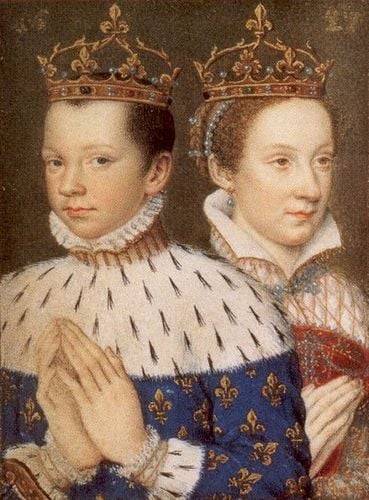
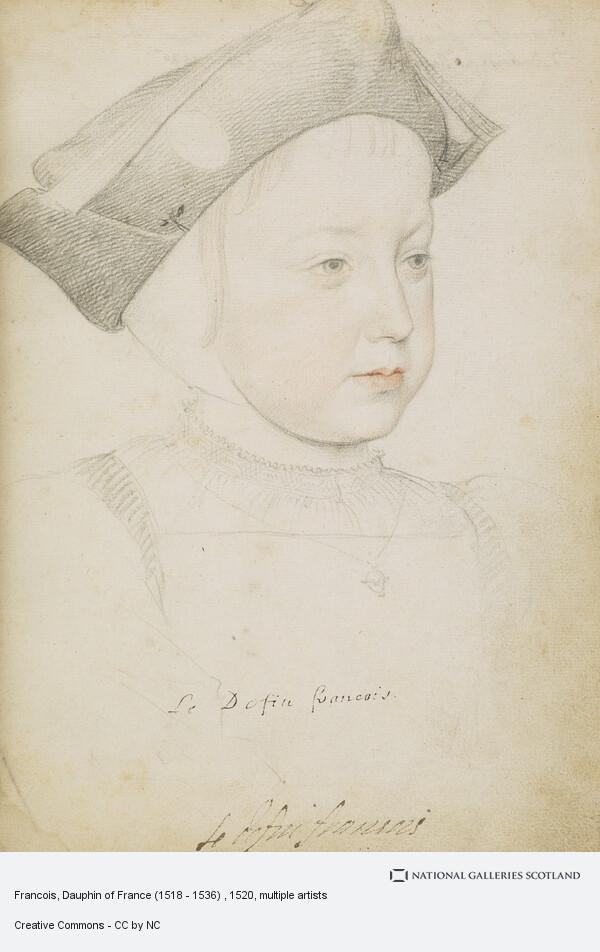

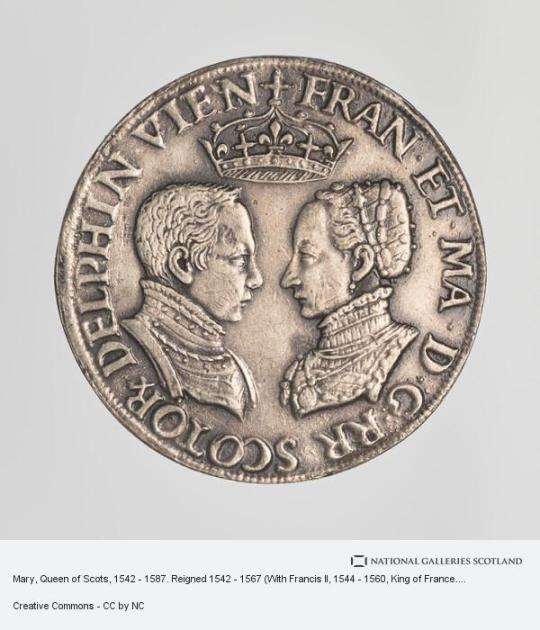
On December 5th 1560 King Francis II of France, the husband of Mary Queen of Scots, died.
Although not crowned it has to be remembered that Francis was also King consort of Scotland.
Francis was born on 19 January 1544, the eldest son of Henry II of France and Catherine de Medici, he was named for his grandfather, King Francis I.
When Francis was four years old, the Scots and French signed the Treaty of Haddington in July 1548 arranging the betrothal of Mary Queen of Scots and the dauphin Francis in return for French aid to expel the invading English. Mary Queen of Scots sailed from Dumbarton for France in the August of 1548 when she was but five years old. The young Queen was accompanied by her four Marys, the daughters of Scottish noble families, Mary Beaton, Mary Seton, Mary Fleming and Mary Livingston.
Mary spent the rest of her childhood at the court of her father-in-law, Henri II Her father-in-law, Henry II of France wrote 'from the very first day they met, my son and she got on as well together as if they had known each other for a long time'. Mary was a pretty child and brought up in the same nursery as her future husband and his siblings, became very attached to him. She corresponded regularly Mary of Guise , who remained in Scotland to rule as regent for her daughter. Much of her early life was spent at Château de Chambord. She was educated at the French court learning French, Latin, Greek, Spanish and Italian and enjoyed falconry, needlework, poetry, prose, horse riding and playing musical instruments.
Mary was the cosseted darling of the French court, the doting Henri II wrote 'The little Queen of Scots is the most perfect child I have ever seen.' He corresponded frequently with Mary of Guise, expressing his delight in his young daughter-in-law. Mary's maternal grandmother, Antoinette of Guise, in a letter to her daughter in Scotland, stated that she found Mary ' very pretty, graceful and self assured.'
Francis and Mary were married with spectacular pageantry and magnificence in the cathedral of Notre Dame, Paris, by the Cardinal Archbishop of Rouen, in the presence of Henry II, Queen Catherine de' Medici and a glittering throng of cardinals and nobles. The French courtier Pierre de Brantôme described Mary as ‘a hundred times more beautiful than a goddess of heaven … her person alone was worth a kingdom.’
Among the wedding guests was one, James Hepburn Earl of Bothwell. Francis was fourteen and Mary fifteen at the time, Francis then held the title King consort of Scotland until his death.
When Henri II was killed during a jousting contest, incidentally by Gabriel de Lorges, Comte de Montgomery, Captain of The Scots Guard, and a descendant of Alexander Montgomerie of Auchterhouse, Mary's young husband Francois ascended the throne. Francis was reported to have found the crown of France so heavy that the nobles were obliged to hold it in place for him.
The young Francis became a tool of Mary's maternal relations, the ambitious Guise family, who seized the chance for power and hoped to crush the Huguenots in France. The Huguenot leader, Louis de Bourbon, prince de Condé plotted the conspiracy of Amboise in March 1560, an abortive coup d'etat in which Huguenots surrounded the Château of Amboise and attempted to seize the King. The conspiracy was savagely put down, and its failure led to increase the power of the Guises. This alarmed the king 's mother, Catherine de Medici, who reacted by attempting to secure the appointment of the moderate Michel de L'Hospital as chancellor.
During the autumn of 1560 François became increasingly ill, and died from the complications of an ear condition, in Orléans, Loiret. Since the marriage had borne no children, the French throne passed to his 10-year-old brother, Charles IX. Mary was said to be grief-stricken Multiple diseases have been suggested as the cause of Francis' death, such as mastoiditis, meningitis, or otitis exacerbated into an abscess. Francis was buried in the Basilica of St Denis.
There was no place for the seventeen year old Mary, Queen of Scots in France, she prepared to return to her native Scotland with an uncertain future that would hold.
16 notes
·
View notes
Text
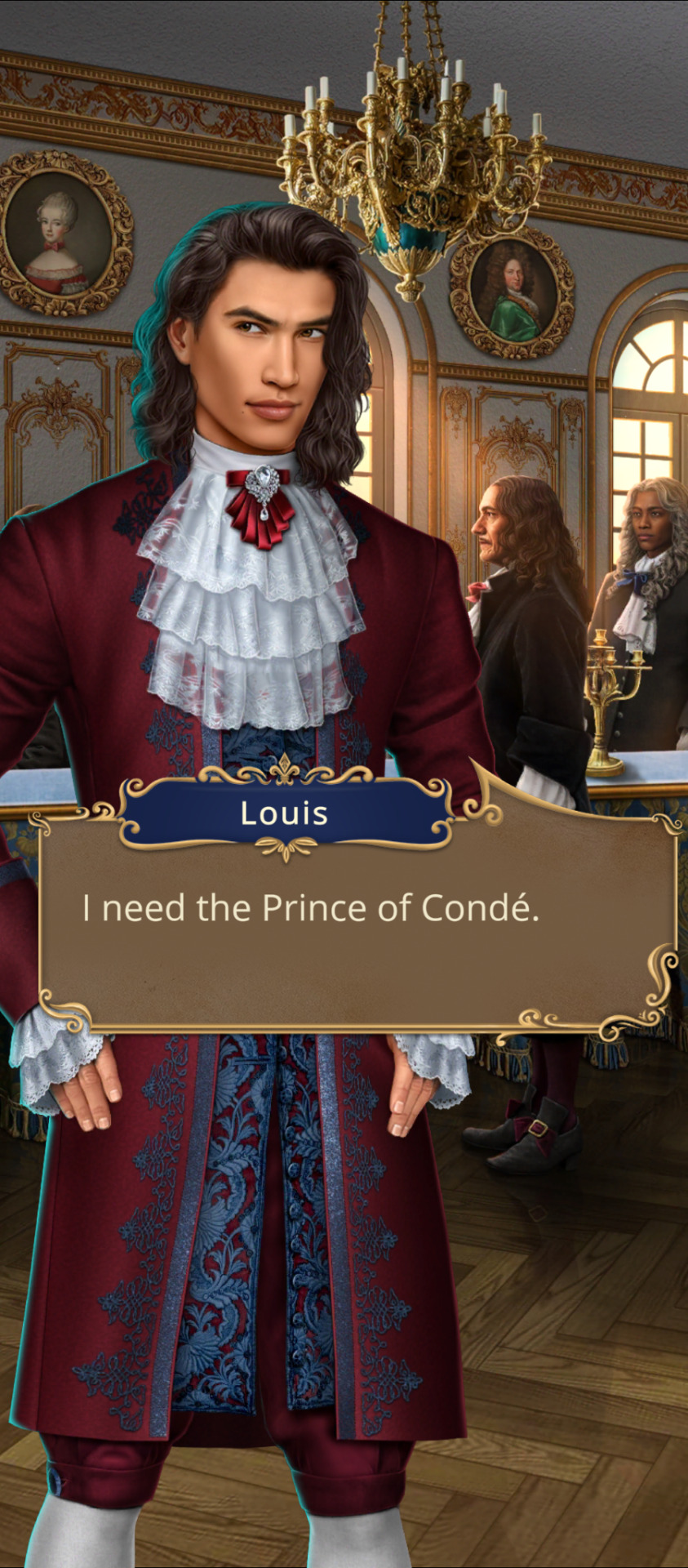
Louis II de Bourbon, Prince of Condé, also known as le Grand Condé (1621–1686), was of the Sun King's pre-eminent generals and is remembered for being a brilliant tactician and strategist.
9 notes
·
View notes
Text

Equestrian Portrait of Louis II de Bourbon, the Grand Condé, as a Boy, Gonzales Coques, between 1643 and 1647
#art#art history#Gonzales Coques#portrait#portrait painting#equestrian portrait#children in art#House of Bourbon#Ancien Regime#Baroque#Baroque art#Flemish Baroque#Flemish art#17th century art#Herzog Anton Ulrich Museum
74 notes
·
View notes
Text
THIS DAY IN GAY HISTORY
based on: The White Crane Institute's 'Gay Wisdom', Gay Birthdays, Gay For Today, Famous GLBT, glbt-Gay Encylopedia, Today in Gay History, Wikipedia, and more …


1157 – Richard The Lion Heart, or Cœur de Lion, King of England, born (d.1199); Known to most from Sir Walter Scott's "Ivanhoe," as a young man Richard fell in love with the king of France, Philip II. Richard was an educated man who composed poetry, writing in French and Limousin. He was said to be very attractive; his hair was between red and blond, and he was light-eyed with a pale complexion. He was apparently of above average height, but as his remains have been lost since at least the French Revolution, his exact height is unknown.
Boswell's translation of King Henry II's journal records that Richard (then the Duke of Aquitaine) "remained with Philip, the king of France, who so honored him for so long that they ate every day at the same table and from the same dish, and at night their beds did not separate them. And the king of France loved him as his own soul; and they loved each other so much that the king of England was absolutely astonished at the passionate love between them and marveled at it."
Before 1948, no historian appears to have clearly affirmed that Richard was homosexual. Historian Jean Flori, however, has analysed the work of contemporary historians, and reported that they quite generally accepted that Richard was homosexual. However, not all historians agree regarding Richard's sexuality; but Flori analyzed the available contemporaneous evidence in great detail, and concluded that Richard's two public confessions and penitences (in 1191 and 1195) must have referred to the "sin of sodomy". There are contemporaneous accounts of Richard's relations with women, and Richard acknowledged one illegitimate son, Philip of Cognac. Flori thus concludes that Richard was probably bisexual, but he does agree that the contemporaneous accounts do not support the allegation that Richard had a homosexual relation with King Philip II of France.
The historian John Gillingham has suggested that theories that Richard was homosexual probably stemmed from an official record announcing that, as a symbol of unity between the two countries, the kings of France and England had slept overnight in the same bed. He expressed the view that this was "an accepted political act, nothing sexual about it; ... a bit like a modern-day photo opportunity."
Richard did later marry somewhat unenthusiastically. Upon death his widow had to sue the pope for recognition as widow, as Richard hadn't bothered to make his marriage official.

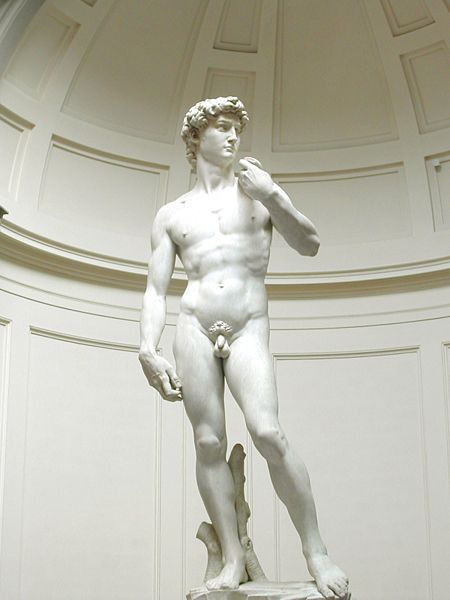
1504 – Michelangelo's David is unveiled in Florence.

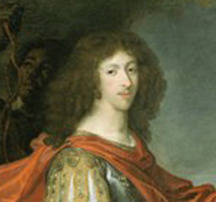
1621 – Louis II De Bourbon, Prince De Condé, French General, born; Known as "the Great Condé," this greatest of French generals was an intimate of Moliere, Racine, Boileau, and La Bruyère. He also had the misfortune to be acquainted with "Madame"—the gossipy wife of Philip, duc d'Orleans—who spread the word about Conde's amours with his own sex.
Condé, a clever gent, went to great pains to establish a reputation as a great womanizer, but between the sharp tonge of Madame and the word of the well-known courtesan, Ninon de Lenclos, who was in a position to know, Condé fooled no one with his boasts.


1975 – Gays In The Military: U.S. Air Force Tech Sergeant Leonard Matlovich, a decorated veteran of the Vietnam War, appears in his Air Force uniform on the cover of Time Magazine with the headline (printed in bold letters) "I Am A Homosexual." He is later given a general discharge. Matlovich, who received a purple heart and a bronze star, for bravery, was one of the first high profile members of the U.S. military to come out of the closet and challenge the ban on Gays serving. Matlovich is also famous for his statement, which is also the epitaph on his gravestone in Washington, DC's Congressional Cemetery, "When I was in the military they gave me a medal for killing two men and a discharge for loving one."

1958 – A California appellate court overturns the nuisance conviction of a theatre owner because of sex in the theatre.


2 notes
·
View notes
Photo



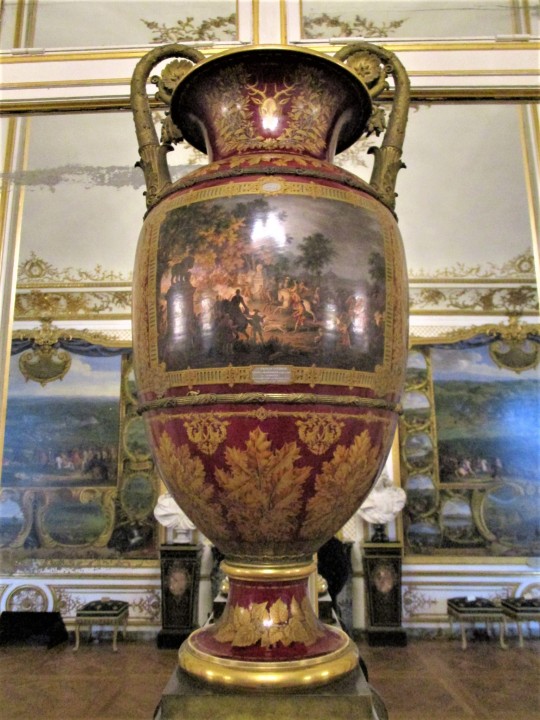
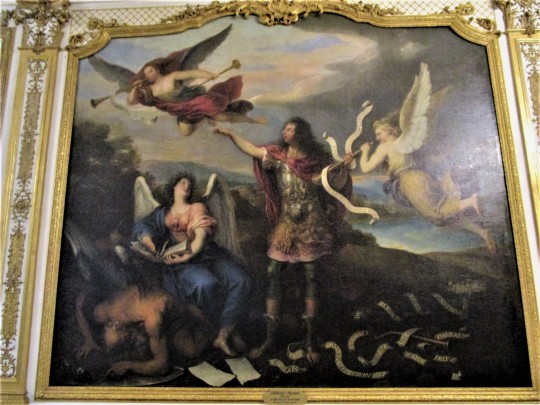
The Gallery of Battles at the Château de Chantilly was decorated at the end of the 17th century with a series of eleven paintings illustrating the main military victories of the Grand Condé, Louis II of Bourbon-Condé. It was designed by Jules-Hardouin Mansart, principal architect to King Louis XIV. The unusual writing desk with attached filing cabinet was made around 1770 for the Château de Vaux-le-Vicomte.
Photos by Charles Reeza
#French castle#French decorative arts#antique furniture#bragging room#reception hall#Oise#France#places to travel#travel photos
22 notes
·
View notes
Photo

LES LUMIÈRES DE VERSAILLES #leslumièresdeversailles En 1758, les Français sont défaits à la bataille de Krefeld. Le comte de Clermont qui commande l’armée française s’enfuit jusqu'à Neuss. En entrant dans la ville, il demande à l'officier de garde : - Est-il arrivé beaucoup de fuyards ? - Non, monseigneur, vous êtes le premier. 1- UNE IDÉE DE PEINTURE Le peintre François-Hubert Drouais (1727-1775) a représenté Louis de Bourbon, comte de Clermont. Ce peintre devient successivement l'élève de son père, Hubert Drouais, de Donat Nonnotte, de Carle Van Loo, de Charles-Joseph Natoire, et de François Boucher. Reçu membre de l’Académie royale, le 25 novembre 1758, sur présentation d'un portrait de Coustou et d'un portrait de Bouchardon (aujourd'hui au Louvre) comme morceau de réception, il est rapidement appelé à Versailles. 2- UN PEU D'HISTOIRE Bien qu'entré dans les ordres, le comte de Clermont (1709-1771) obtient du pape Clément XII, en 1733, l'autorisation de porter les armes. Lieutenant général en 1735, il participe aux campagnes des Pays-Bas. Chargé du commandement de l'armée de Bohême, il est vaincu à la bataille de Krefeld (1758). Il commande l'armée du Rhin en 1758. Après les déboires rencontrés par la France face à Frédéric II de Prusse lors de la guerre de Sept Ans, il élabore des plans de remise en ordre de l'armée. Il est aussi nommé gouverneur de la Champagne le 19 septembre 1751 en remplacement de Charles de Rohan-Soubise et porte le titre jusqu'en 1769 lorsqu'il la charge à son neveu Louis VI Henri de Bourbon-Condé. 3- NE MUSIQUE D'UN BONHEUR CONTAGIEUX Regardez "François Couperin - L'Apothéose de Lully (1725)" https://youtu.be/BwO-nO9dvk4 L'apothéose de Lully (titre complet : Concert instrumental sous le titre d'Apothéose composé à la mémoire Immortelle de l'incomparable Monsieur de Lully) est une sonate en trio de François Couperin parue en 1725. La sonade, selon le terme que Couperin tentera en vain d'imposer est destinée à deux dessus de viole, basse d'archet et basse continue ou deux clavecins. François Couperin, né le 10 novembre 1668 à Paris et mort le 11 septembre 1733 à Paris, est un important compositeur, organiste et claveciniste fra https://www.instagram.com/p/CiHqxmZMoK5/?igshid=NGJjMDIxMWI=
0 notes
Text
Opera Simplified #7: Les Huguenots—Notes, Act I
** Two things:
the overture (or really more of a prelude) here is not the overture Meyerbeer originally wrote, which was apparently more in a traditional overture style and was cut and replaced with this one; however, no recording has been made of the original overture, so I cannot include it here.
more important to know about this overture: yes, the tune here IS “Ein feste Bürg ist unser Gott” (“A Mighty Fortress Is Our God”), a hymn by the one, the only Martin Luther. keep the tune in the back of your head because Meyerbeer uses it as a motif throughout the opera. Yes, it is a Lutheran hymn. Yes, the vast majority of Huguenots were Calvinists. Just roll with it.
*** Admiral Gaspard II de Coligny (1519-1572) was a prominent French nobleman who converted to Protestantism in the late 1550s.
In 1562, the first of the French Wars of Religion broke out and Coligny served as a lieutenant under the Huguenot military general Louis, Prince of Condé. After Condé was executed by Catholics following his defeat, surrender, and capture at the Battle of Jarnac in 1569, Coligny became the de facto leader of the Huguenots. Well liked by King Charles IX of France, he was a voice in the French government on behalf of the Huguenots and of peace. However, this, along with (obviously) his Protestantism, made him many enemies at court.
**** As previously mentioned, Henri de Bourbon was the young Protestant King of Navarre at the time this opera takes place and was about to marry to Marguérite de Valois. Thus, it is a favor to the incoming court to have good relations with Protestant nobles.
***** This hymn, which will recur in different forms throughout the opera, is the first appearance in the opera of the previously-mentioned “Ein feste Bürg”, although in French and obviously not a 100% literal translation.
****** La Rochelle is a seaport in western France (and according to early letters by Meyerbeer, Raoul and Marcel’s hometown). During the French Wars of Religion, it was one of the Huguenots’ chief strongholds, and it declared itself independent from France in 1568. The city was famously sieged several times, most notably for about nine months in the immediate aftermath of the Saint Bartholomew’s Day Massacre. However, the conflict being referenced here is presumably a Catholic naval blockade of the city that took place in 1571, which was fiercely resisted by Huguenot forces and the city’s inhabitants.
#opera#opera tag#les huguenots#notes#meyerbeer#giacomo meyerbeer#augustin eugène scribe#émile de saint-amand deschamps
1 note
·
View note
Photo
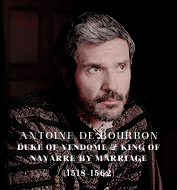
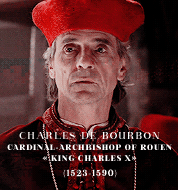
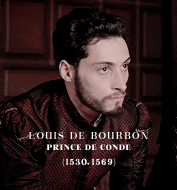




prominent members of the Bourbon-Condé Family (16th-17th century)
#historyedit#documentaryedit#perioddramaedit#versaillesedit#mine#*#16th century#17th century#louis xiv#louis xiii#henri iv#the bourbon family#the condé family#catherine de bourbon#anne-geneviève de condé#armand de conti#louis ii de condé#henri i de condé#henri ii de condé#charles ii de bourbon#charles de bourbon#louis i de condé#antoine de bourbon#françois de conti#it's a bit of a mess rip
253 notes
·
View notes
Photo

Louis II de Bourbon, 4th prince of Condé, also called duc d’Enghien (1621 - 1686)
Painted by Jean-Léon Gérôme
6 notes
·
View notes
Text
"They were unhappy with my refusal"
It was Louis XIV's good fortune that the early years of his personal reign coincided with the end of nearly a century of intermittent civil strife. Condé's crushing defeat during the Fronde was a lesson few would forget, and it underlined, if that were necessary, that the loss of favour or dissatisfaction with those in whom the monarch placed his trust was no longer a justification for plots or rebellion. Cold steel had played the dominant part in that transition, but it was accompanied by changing attitudes among the elites who had also suffered grievously from these violent struggles and both the monarchy and the nobility needed time to adjust to the new realities of power. Yet for all his advantages, Louis XIV was still confronted by the often-inflated ambitions of his relatives, who were constantly hoping for military commands, governorships, or other offices, and he could never forget that they were liable to interpret any refusal as a personal rebuff. In his memoirs the king had described the court early in his reign as an agitated forum where habits of negotiation with ministers had created a climate where favour was "demanded and snatched rather than awaited, always having repercussions from one to another, no longer obliging anyone, only good for mistreating those whom one wished to refuse." The challenge for the young monarch was to educate the grandees in the need for patience and to convince them that he would reward loyalty and obedience. To achieve that aim, he needed to show a capacity to impose order on his own family, which in many ways set the tone for the rest of the court, and even for a monarch as charismatic and conscientious as Louis XIV it was impossible to satisfy everyone. He was constantly challenged by the demands or actions of others, and the reality of court life was very different from the serene façade that is often portrayed.
In his memoirs the king referred to an incident in 1666 when his brother, Philippe duc d'Orléans, known by his title of Monsieur, had requested the governorship of Languedoc. Well aware that this populous and wealthy province had been the springboard for previous revolts the king had already refused the same request in 1660, and he again disappointed his brother arguing that he did not wish to see "the great governorships in the hands of the sons of France, who for the good of the state, must never have any other refuge than the court nor other place of safety than in the heart of their brother." While that argument might seem prudent, Monsieur had no choice other than to insist in order to uphold his own rank and prestige because, although the precedent might not help his case, the recently deceased Gaston d'Orléans had once held that governorship. The king's rebuff was keenly felt, and, according to Louis XIV, his brother and his wife, Henriette d'Angleterre, egged on by the
"fine words of some troublemakers, displayed in various ways that they were unhappy with my refusal. For my part, without giving any sign of having perceived anything untoward, I left them the time to think better. And, in fact, coming back to themselves soon afterward, they both asked me to forgive them for the hot-headedness that they had shown."
Louis XIV's equanimity had stood him in good stead because, as with their father and Gaston, the potential for serious conflict between the royal brothers was always present. As recently as the spring of 1658, when the king had fallen gravely ill while on campaign, rumours had been circulating of aristocrat malcontents flocking to Monsieur in the hope of toppling Cardinal Mazarin.
According to one scholarly account, a desire to avoid a repetition of the struggles between Louis XIII and Gaston had led first Mazarin and subsequently Louis XIV to follow a conscious policy designed to crush the personality and ambitions of Monsieur. It is true that despite living most of their lives in close proximity the brothers were never intimate, and Monsieur was clearly forced to accept a subordinate position. Some of the latent political tension was defused by the birth of a dauphin in November 1661, which created a buffer between the younger brother and the throne, even if it could not prevent regular and sometimes angry disputes. Yet the idea of the king systematically undermining Monsieur is far from compelling.
Julian Swann- Exile, Imprisonment, or Death: the Politics of Disgrace in Bourbon France
#xvii#julian swann#exile imprisonment or death: the politics of disgrace in bourbon france#louis xiv#louis ii de bourbon condé#la fronde#philippe de france duc d'orléans#monsieur#gaston d'orléans#henriette d'angleterre#cardinal mazarin
5 notes
·
View notes
Photo
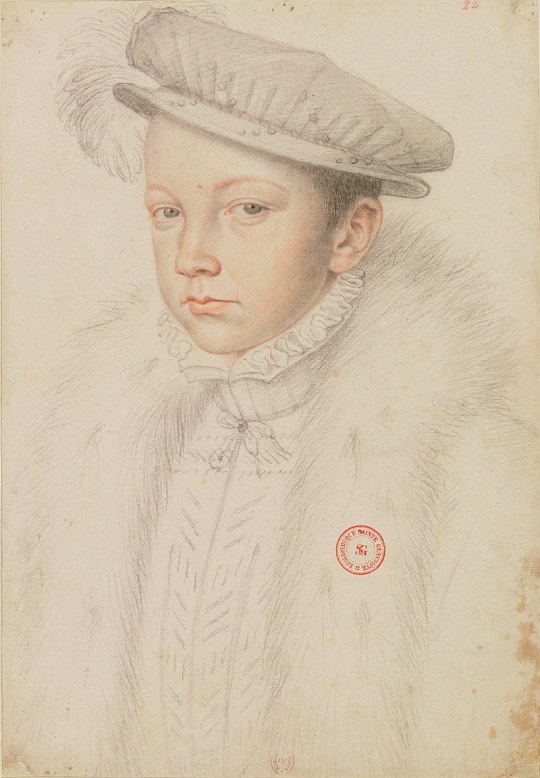

On December 5th 1560 King Francis II of France, the husband of Mary Queen of Scots, died.
Although not crowned it has to be remembered that Francis was also King consort of Scotland.
Francis was born on 19th January 1544, the eldest son of Henry II of France and Catherine de Medici, he was named for his grandfather, King Francis I.
When Francis was four years old, the Scots and French signed the Treaty of Haddington in July 1548 arranging the betrothal of Mary Queen of Scots and the dauphin Francis in return for French aid to expel the invading English. Mary Queen of Scots sailed from Dumbarton for France in the August of 1548 when she was but five years old. The young Queen was accompanied by her four Marys, the daughters of Scottish noble families, Mary Beaton, Mary Seton, Mary Fleming and Mary Livingston.
Mary spent the rest of her childhood at the court of her father-in-law, Henri II Her father-in-law, Henry II of France wrote ‘from the very first day they met, my son and she got on as well together as if they had known each other for a long time’. Mary was a pretty child and brought up in the same nursery as her future husband and his siblings, became very attached to him. She corresponded regularly Mary of Guise , who remained in Scotland to rule as regent for her daughter. Much of her early life was spent at Château de Chambord. She was educated at the French court learning French, Latin, Greek, Spanish and Italian and enjoyed falconry, needlework, poetry, prose, horse riding and playing musical instruments.
Mary was the cosseted darling of the French court, the doting Henri II wrote 'The little Queen of Scots is the most perfect child I have ever seen.’ He corresponded frequently with Mary of Guise, expressing his delight in his young daughter-in-law. Mary’s maternal grandmother, Antoinette of Guise, in a letter to her daughter in Scotland, stated that she found Mary ’ very pretty, graceful and self assured.’
Francis and Mary were married with spectacular pageantry and magnificence in the cathedral of Notre Dame, Paris, by the Cardinal Archbishop of Rouen, in the presence of Henry II, Queen Catherine de’ Medici and a glittering throng of cardinals and nobles. The French courtier Pierre de Brantôme described Mary as ‘a hundred times more beautiful than a goddess of heaven … her person alone was worth a kingdom.’
Among the wedding guests was one, James Hepburn Earl of Bothwell. Francis was fourteen and Mary fifteen at the time, Francis then held the title King consort of Scotland until his death.
When Henri II was killed during a jousting contest, incidentally by Gabriel de Lorges, Comte de Montgomery, Captain of The Scots Guard, and a descendant of Alexander Montgomerie of Auchterhouse, Mary’s young husband Francois ascended the throne. Francis was reported to have found the crown of France so heavy that the nobles were obliged to hold it in place for him.
The young Francis became a tool of Mary’s maternal relations, the ambitious Guise family, who seized the chance for power and hoped to crush the Huguenots in France. The Huguenot leader, Louis de Bourbon, prince de Condé plotted the conspiracy of Amboise in March 1560, an abortive coup d'etat in which Huguenots surrounded the Château of Amboise and attempted to seize the King. The conspiracy was savagely put down, and its failure led to increase the power of the Guises. This alarmed the king ’s mother, Catherine de Medici, who reacted by attempting to secure the appointment of the moderate Michel de L'Hospital as chancellor.
During the autumn of 1560 François became increasingly ill, and died from the complications of an ear condition, in Orléans, Loiret. Since the marriage had borne no children, the French throne passed to his 10-year-old brother, Charles IX. Mary was said to be grief-stricken Multiple diseases have been suggested as the cause of Francis’ death, such as mastoiditis, meningitis, or otitis exacerbated into an abscess. Francis was buried in the Basilica of St Denis.
There was no place for the seventeen year old Mary, Queen of Scots in France, she prepared to return to her native Scotland with an uncertain future that would hold.
35 notes
·
View notes
Text
thirty years war, Oh you mean the time France and Sweden Bromanced so HARD that they almost conquered the whole of central Europ and made Holy Roman Empire Look Like a Joke???
France had a Hella Good Time fighting with Louis II de Bourbon, Prince of Condé just charging into the Spaniards like a blazing fireball screaming “Vive la France!”
Austria and Spain trying to keep their sht together while Sweden and France just poking HRE with their muskets is (chef kiss)
#aph france#aph sweden#aph spain#aph austria#aph hre#conde is just so gd funny#turenne was like fk this dude he'll kill us all#i'd give mercy a star#kings and generals
23 notes
·
View notes
Text
This Day, 20th August 1648, The Battle of Lens, The Thirty Years War.

Aug 20 1648Battle of Lens
The Battle of Lens (20 August 1648) was a French victory under Louis II de Bourbon, Prince de Condé against the Spanish army under Archduke Leopold in the Thirty Years' War (1618-1648). It was the last major battle of the war.
Lens is a fortified city in the historic region of Flanders, today a major city in the Pas-de-Calais department of northern France. The city had been captured by the French in 1647. As France began to experience a rebellion of the nobility against the leadership of Cardinal Mazarin, known as the Fronde, the Spanish saw an opportunity to retake Lens and possibly gain ground. The Prince de Condé rushed from Catalonia to Flanders and an army was cobbled together from Champagne, Lorraine as well as Paris. The French army was 16,000 men (more than half were cavalry) and 18 guns. The Spanish army was larger, comprising 18,000 men (also more than half cavalry) and 38 guns. The armies drew up, but the Spanish were on high ground and Condé decided not to attack. As the French retired, the Spanish cavalry skirmished with the French rearguard and the engagement escalated until the armies were fully engaged. The Spanish infantry pushed back the French, breaking the Gardes Françaises regiment, but the superior French cavalry were able to defeat their counterparts and envelop the center.
The danger to Dutch trade from the possession of Dunkirk by the French, the proposal of France to exchange Catalonia for the Spanish Netherlands, the declining health of Frederick Henry and his death in March 1647, all contributed to stimulate the Dutchdesire for peace. Their cooperation in 1645-6 had been but slight; they now seriously prepared to treat. Though their Treaty of Münster was not concluded until January 1648, it had been settled in principle more than a year before; and the year 1647 saw the French left alone in their northern struggle with Spain. In this year Louis de Bourbon, now Prince of Conde, was occupied in Catalonia, and Turenne was detained in Germany by the revolt of the Bernardine troops. France was exhausted, and the conquests of Dixmuyden in Flanders and La Bassee between Bethune and Lille were compensated by the loss of Menin, Armentieres, and Land- recies. In October Gassion was killed at the siege of Lens. In 1648 Conde, recalled from Catalonia, was nominated to the command in Flanders. A final effort was to be made to extort peace. Ypres had been taken and Courtrai lost when in July he was summoned to Paris in consequence of the opening troubles of the Fronde. Once more at the front, and joined by Erlach with 4000 men from the army of Breisach, he advanced to the relief of Lens, which he found had already surrendered to the Archduke Leopold. Retreating towards Bethune, he enticed the Spaniards to leave their entrenchments, and a general engagement followed according to his desire (August 20). The French army, though its right wing at first was roughly handled, was completely victorious. Both wings of the Spaniards were driven in flight. Beck was wounded and captured, refused all assistance, and died of his wounds. Leopold and Fuensaldaña fled to Douai. The Spanish infantry, no longer maintaining the tradition of those who had fallen at Rocroi, surrendered in thousands. The Spanish loss was 8000 men, 30 cannon, all their baggage, and 120 banners. Six days later Paris was in revolt. Many years were to pass before a similar victory was gained by the arms of France.
Source the World History Project website
4 notes
·
View notes
Photo

#DoubleTrouble Antoine of Navarre and Louis of Condé were perfect trouble makers: handsome, sauve, sophisticated, powerful, complicated, and willing to destroy the Valois at all costs. Historically: Antoine de Bourbon, King of Navarre - His son, Henry III of Navarre, became Henry IV of France. He was the first Bourbon King to rule France, after the assassination of King Henry III, of the House of Valois. Louis de Bourbon, Prince of Condé, founder of the House of Condé - Following his conversion to Protestantism, Louis was instrumental in the plot to kidnap the adolescent King Francis II in the "Conspiracy of Amboise," an unfortunate missed opportunity by the Reign writers. By 1558, when a young Mary Stuart became Queen of France with Francis II, Condé was already married with 4 children. He was 12 years Mary’s senior. #BourbonBrothers #BourbonTrouble #AntoinedeBourbon #KingofNavarre #LouisdeBourbon #PrinceofConde #Reign #HistoricalFiction #HistoricalFantasy #HistoricalDrama https://www.instagram.com/p/CZwpIA_L985/?utm_medium=tumblr
#doubletrouble#bourbonbrothers#bourbontrouble#antoinedebourbon#kingofnavarre#louisdebourbon#princeofconde#reign#historicalfiction#historicalfantasy#historicaldrama
1 note
·
View note
Photo

Louis II de Bourbon-Condé dit le Grand Condé, connu d'abord sous le titre de duc d'Enghien, (1621-1686) est un prince du sang français. Général français pendant la guerre de Trente Ans, il fut l'un des meneurs de la Fronde des princes.
1 note
·
View note